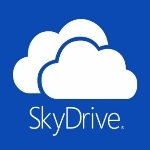
How to Get and Use Microsoft’s SkyDrive
By Bob Rankin
The latest version of Microsoft SkyDrive gives other cloud storage services a run for their money. SkyDrive offers the most free storage space of any major service, and has some compelling features. Here’s what you need to know to get started with SkyDrive…
Free Online Storage for PC, Mac and Mobile Users
Looking for a way to keep files in sync between multiple desktops, laptops or mobile devices? SkyDrive offers 7 GB of free online storage for the task, and lets you edit synced files online with Office Web Apps or your local copy of Office. It can even be used as a lightweight backup solution.
Here’s how to get and use SkyDrive. First, download the SkyDrive app for your device; versions are available for Windows 8, Windows 7, and Windows Vista, but not for Windows XP. SkyDrive also runs on Mac OS X, iPhone, iPad, Windows Phone, and Android mobile devices. The installer runs without any user input. (Windows XP users can download SDExplorer, which provides access to SkyDrive files, but lacks the sync feature.)
After the SkyDrive app is installed, you will be prompted to log in with your Windows Live ID. If you don’t have one, there’s an option to create one. Once you are logged in, a SkyDrive folder will be created on your device. Every file placed in that folder will be automatically uploaded to your SkyDrive account in the cloud.
Install SkyDrive on any other devices you may own, using the same Windows Live ID. Now you can access all of your devices’ SkyDrive files from whichever device you happen to be using. Changes made to a file on one device will be replicated on all devices.
This is a very handy feature, because it eliminates the need to manually copy files from a local folder to your cloud storage service. And vice versa. Your SkyDrive folder acts like any other folder on your computer. You can open and save files directly from any standard Windows file dialog.
Excerpt shared with permission from Bob Rankin.




